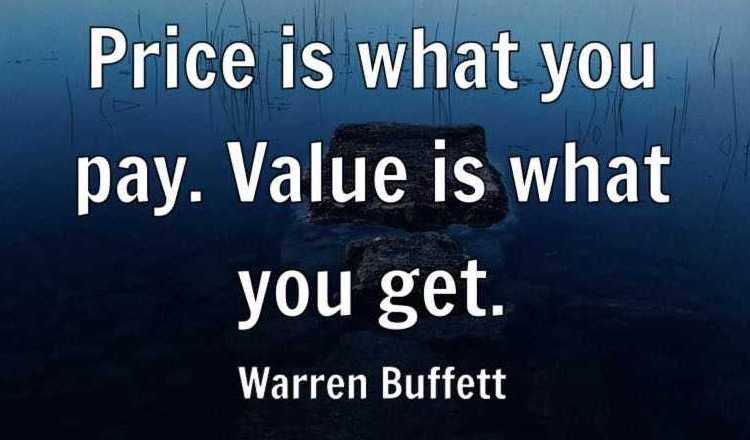People will only ever understand you from their level of perception, therefore, their perception is real, and the truth is not or that it is subjective. The truth refers to objective facts and realities that exist independently of our perceptions or beliefs about them. While different people may have different perspectives and interpretations of the truth, the truth itself remains constant and unchanging. I think it’s important to recognise that our perceptions and interpretations are limited by our own experiences and biases, and that they many not always align with the objective truth. However, when we seek to understand and analyse, we will come closer to understanding the truth and making informed decisions based on it.
SPIN selling
What does SPIN selling mean?
I think that when it comes to selling high-value products a lot of classic rules don’t work and SPIN selling is the ideal sales methodology for making major sales. The term originated from the book, “SPIN Selling” by Neil Rackham in 1988. Rackham studied over 35,000 sales calls made by over 10,000 salespeople in 23 countries over a 12-year period. SPIN selling teaches you to ask situational ‘SPIN’ questions at an appropriate time to move clients through the sales funnel. SPIN questions are based around a framework of four key stages:
· SITUATION – Questions about a client’s process, tools, objectives, and responsibilities. Enabling you to learn about the client’s goals.
· PROBLEM – Questions about what challenges the client is currently dealing with to help them address their specific needs.
· IMPLICATION – Leading questions about problems uncovered in the previous step to help you understand how they negatively affect the client’s organisation. These questions will reframe the size of the problem and increase the sense of urgency in solving them.
· NEED PAYOFF - Questions about potential solutions to reveal and drive home that our product or service will benefit the client’s organisation.
A professional practice
Working as a consultant has given me substantial experience with motivating and inspiring team members to take ownership of their work is a valuable skill that can help to create a productive and successful work environment. I do this by creating an environment where everyone feels invested in the success of the organisation, fostering a sense of teamwork and collaboration which leads to improved morale and higher levels of productivity.
““A wise old owl lived in an oak;
The more he saw the less he spoke;
The less he spoke the more he heard:
Why can’t we all be like that bird?””
Dare to be different
Once you recognise the fact that the truth isn’t taught to the masses, then the pursuit of truth can lead you onto a path of solitude. The weak lean on each other as very few have the strength to walk alone, I think the capacity to experience true solitude may provide you with an inner richness. Nowadays it takes honesty, courage, integrity, and commitment to tell the truth, because we are visibly oppressed and controlled by dangerous influences. There are so many talented people with wonderful creative brains and ideas that we will never hear from because they are too busy surviving. There are also so many people who tried and burned out or were forced to give up their passion to concentrate on making enough money to live. Contact me via e-mail to book a 1:1 session.
As you can see
In my experience, smart people never talk about how smart they are, as they are too busy growing their minds. I have made some observations of smart people, and I think that they tend to:
1. Change their mind
2. Read and write more
3. Have great manners
4. Talk less but say more
5. Stay teachable
6. Show gratitude
7. Ask more questions
8. Work on problems longer
9. Anticipate outcomes
10. Seek feedback
All good leaders can communicate
c/o Forbes magazine
I think leadership and communication are intertwined, as effective leaders are skilled at expressing their beliefs and vision. And by doing so, they build trust and foster a sense of community among their followers. Leaders can also articulate shared values and aspirations. Acknowledging one’s mistakes and vulnerabilities is another key aspect of good leadership. The aim of leadership is not to attract people who need what you have, but to attract those who share your beliefs. Leaders can stand on a street corner and articulate their convictions, drawing others to their cause, as our unwavering belief in an unseen future and our ability to articulate it is our greatest asset.
Don't take it personally
I think sales is a challenging profession, and not everyone who attempts it will succeed. It's important to remember that rejection is a natural part of the sales process, and it's not always a reflection on the salesperson's abilities or performance. That being said, there are certainly things that salespeople can do to improve their chances of success, such as improving their appearance, communication skills, and presentation style.
It's also true that some clients may pick up on a salesperson's nervousness or lack of confidence, and this can be a turnoff. However, there are ways to overcome this, such as practicing sales techniques and developing a deep understanding of the product or service being sold. In addition, salespeople can seek feedback from clients or colleagues to identify areas for improvement. Ultimately, it's up to the salesperson to take responsibility for their performance and strive to improve. By doing so, they can increase their chances of success and minimise missed opportunities. Contact me via e-mail for sales coaching and training sessions.
Nobody likes rejection
Acceptance is one of the fundamental human needs, and it can influence individuals to pursue various career paths. Although sales may be a popular profession, claiming to "love rejection" during an interview is questionable, as it implies a desire for pain or a mere attempt to sound impressive. In reality, rejection is an inevitable aspect of sales, but successful salespeople are those who are willing to endure it in order to succeed. Not everyone can handle the emotional strain of prospecting and facing rejection regularly, which is why many individuals, including some salespeople, shy away from it.
Horse metaphor
c/o The New York Times
Horses possess acute sensitivity and are swift to respond to your energy. To illustrate this concept, I use a metaphor of a horse and its rider. In this metaphor, the horse represents your emotional self - the raw animal energy, the hormones that elicit anger or excitement, and so on. On the other hand, the rider symbolises your rational self - your prefrontal cortex, your executive decision-making processes that employ logical reasoning to achieve your goals.
““Horses jump over obstacles and Macbeth’s ambition will propel him to clear the obstacle of Duncan. However, the word also has other suggestions, which Macbeth realises. Ambition is something of a problem – it may help the rider clear an obstacle, but it may also make the rider go down.””
Everyone wants to be sustainable
c/o Getty Images
Why are we making more and more?
I think the biggest thing we can do is reduce consumption and reduce production. The last few years have been pretty hard for everyone in retail, let alone those like us who are trying to change the fashion paradigm to sustainability. We all like to think of ourselves as leading through the idea of offering modern people comfortable yet empowering designs which simplify their clothing choices during their busy lives. It’s hard to convince people to buy less on a promise it will last longer. In order to succeed in the current economic climate, businesses must move towards a more circular, ethical, and holistic way of operating. The big question is how retailers will respond to the lower demand and higher cost environment that we expect will persist for the rest of this year.
““Just do less: Buy less, consume less, produce less. That’s a really hard line to walk when you’re trying to run a business and you’re measuring your success by how much you sell.” ”
The triangle of change
In general, most individuals and organisations will only change when there is either a massive reward or there’s going to be massive pain, suffering or inconvenience by not changing. The "triangle of change" is a model used to explain the three key elements that need to be present for change to occur successfully in any organisation. The three things that make up the triangle of change are:
Leadership
Change needs to be led by someone who has a vision and is willing to take action to make that vision a reality. Effective leadership is crucial for creating a sense of urgency, inspiring and motivating people to embrace the change, and providing direction and guidance throughout the process.Culture
The culture of an organisation or system plays a crucial role in determining whether change is successful. A positive and supportive culture can create an environment where change is embraced and people are willing to take risks, learn new skills, and adapt to new ways of doing things. On the other hand, a culture that is resistant to change can make it difficult to implement new ideas and initiatives.Process
The third component of the triangle of change is the process, which refers to the steps and actions that need to be taken to bring about the desired change. This involves setting goals, creating a plan, implementing the plan, and measuring progress along the way. Effective processes are essential for ensuring that change is managed in a structured and systematic way, and that everyone is working towards the same goals.
Focus on the champion
The iPhone is a hero product
An ancillary product refers to an additional product that is obtained as a free or supplementary purchase while buying another product. These types of products are usually offered as an incentive to customers, rather than reducing prices or offering discounts, to encourage them to purchase the primary product. The main product of a brand is typically considered as their flagship (or “hero”) product, which embodies their values and is prominently displayed in presentations and displays. It is the product that people recommend to others and urge them to try. Regardless of how many products a brand offers, the flagship product is the one that best represents the brand. I think we tend to be willing to pay for the flagship product as we believe it provides good value for money, unlike ancillary products.
Try something new
The pandemic probably accelerated innovation various fields as the unusual circumstances have allowed for a willingness to experiment and take risks without fear of failure. During or after a significant global incident, people are more open to trying new things and are given the freedom to fail, which can change their attitudes towards taking risks. Although human beings tend to stick to routine, which can result in incremental improvements, it is not conducive to exponential progress or thinking outside the box. I think to make new discoveries, one needs to break out of our routines.
““We cannot solve our problems with the same thinking we used when we created them.””
Kicking a habit
I think developing a conviction to change is a crucial first step towards making lasting changes. This conviction can then transform into a strong determination to change, which will motivate you to make sustained efforts towards implementing that change. Take the example of quitting smoking - you need to be aware of the harmful effects of smoking, and then increase your awareness until you firmly believe in the need to quit. This conviction will further strengthen your determination to quit, and ultimately, you will need to make a conscious effort to establish new habits. In this context, education and learning play an important role as they can help you develop the conviction and commitment needed to make lasting changes.
Contact me via e-mail to book a meeting where we can anaylise your goals, objectives and results.
What's the alternative?
c/o New York Times
Is there a correlation between expensive solutions and big effects?
I think the short answer is not necessarily.
While some expensive solutions may have a big impact, there are also instances where small, low-cost solutions can lead to significant outcomes. The relationship between cost and impact is not always straightforward, and it depends on the specific context and problem being addressed. In some cases, a simple and inexpensive solution may be the most effective, while in other cases, a complex and costly solution may be required to achieve the desired results. Ultimately, the effectiveness of a solution should be evaluated based on its ability to address the problem at hand, rather than its cost.
Better choices
I think that one of the most wonderful things about marketing is that you can create huge amounts of delight, memorability, and distraction with relatively small levels of expenditure. Organisations, businesses, and governments often seek grandiose solutions, overlooking the fact that small things can also have a profound impact human behaviour. Encouraging people to make better choices has a greater influence than using punishment as a deterrent. Most human actions deviate from physical laws, and are often disproportionate in nature, unlike the predictability of physics. The correlation between ‘Input A’ and ‘Output B’ is usually insignificant in human behaviour and can even be contradictory.
Constructive feedback
c/o The Guardian Nigeria
I’m always striving to learn and improve. Here are the steps that have helped me adopt feedback and improve my communication from R. Evon Benson-Idahosa.
1. Pause and resist the defensive posture and choose to listen with a heart that is open and pliable.
2. Don’t automatically attempt to counter what is constructive simply because it may be unsettling. Instead, breathe and look for patterns. Have you heard this before? Are there consistencies in the feedback?
3. Rather than react, respond with gratitude and by asking clarifying questions. Can you explain what you meant by this or perhaps give me an example?
4. Acknowledge the possibility that this may be a blind spot, because how we see ourselves is often rather different from how people see us. So take a census with some of those in your trusted circle. Do they agree with the feedback?
5. And finally, be unafraid and humble enough to look in the mirror to make the necessary adjustments. After all, it is only when we can see our imperfections that we have the opportunity to courageously transform them.
These are her thoughts of the Tuesday.
One of the factors
Via KEA Startup Hub, Copenhagen
Start-ups, by definition have no momentum, and in business, before you gain momentum, you have to create the perception of momentum. This is why start-ups need marketing from the beginning of their journey, and this should not be - fake it, until you make it - either. Many people confuse marketing with telling lies or overt hyperbole (over exaggeration). It's about building excitement, curiosity, and interest about what you're doing. I have a proven track record of exceeding results in highly demanding environments from start-ups to corporates. Are you thinking about springing out as an entrepreneur? Contact me via e-mail for a 1:1 discovery meeting.
Rinse and repeat
One thing I've learned that when you "win", you can't come back the same way twice. You need to have a new mindset, a new fire, a new approach if you want to secure victory over and over again. And this must be all based on universal principles. Therefore, when success begins to slip from your fingers, for whatever reason, the response isn’t to grip and claw so hard that you shatter it to pieces. It’s to understand that you must work yourself back to the aspirational phase. You must get back to first principles and best practices.
“Two principals of a happy life:
1. Use things and not people.
2. Love people and not things.”
Pave the way
c/o Shutterstock
As a leader your job is to help people get clarity on the things that matter the most. Clarity about the purpose will help translate the next steps for action to achieve the desired outcome. Marcus Buckingham said, “Effective leaders don’t have to be passionate. They don’t have to be charming. They don’t have to be brilliant…They don’t have to be great speakers. What they must be is clear. Above all else, they must never forget the truth that of all the human universals…our need for clarity is the most likely to engender in us confidence, persistence, resilience, and creativity.” I think clarity leads to attention and attention leads to results.
““If you cannot explain something in simple terms, you do not understand it.””





















